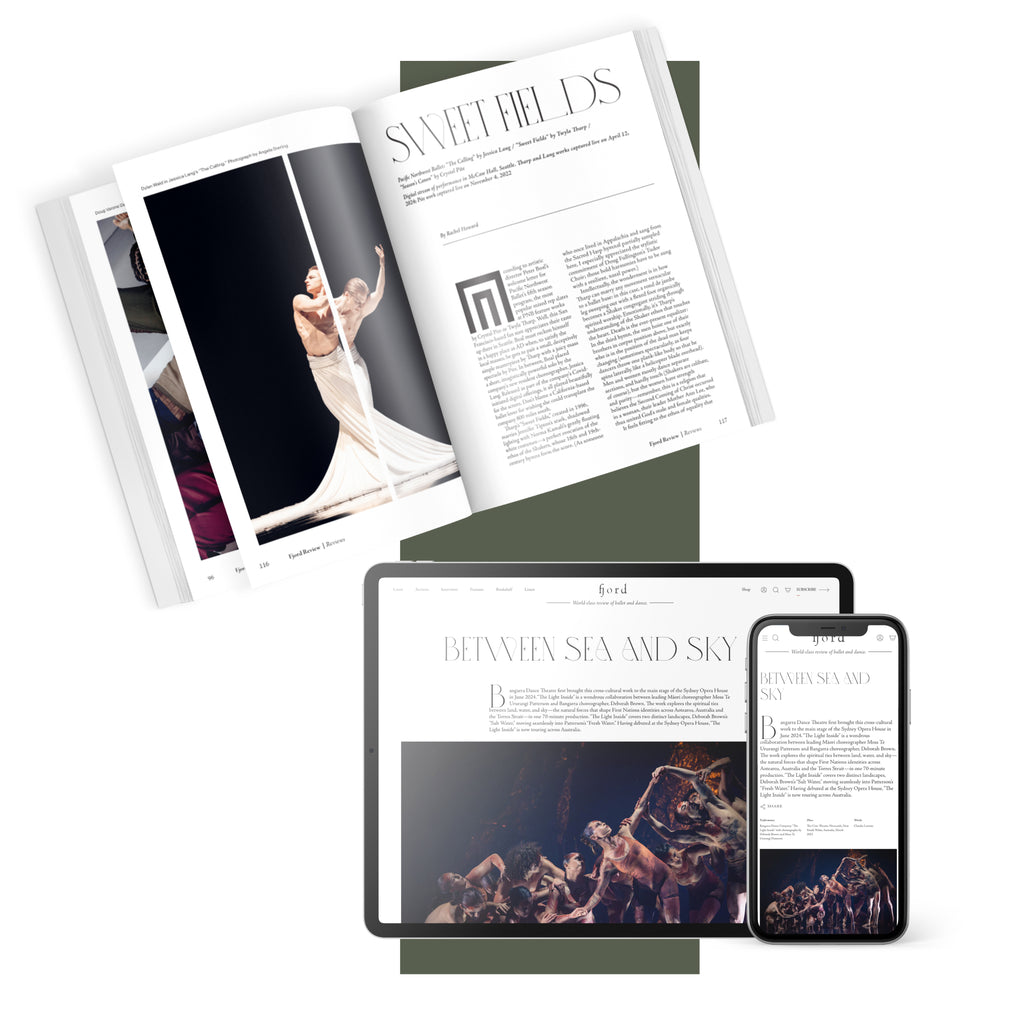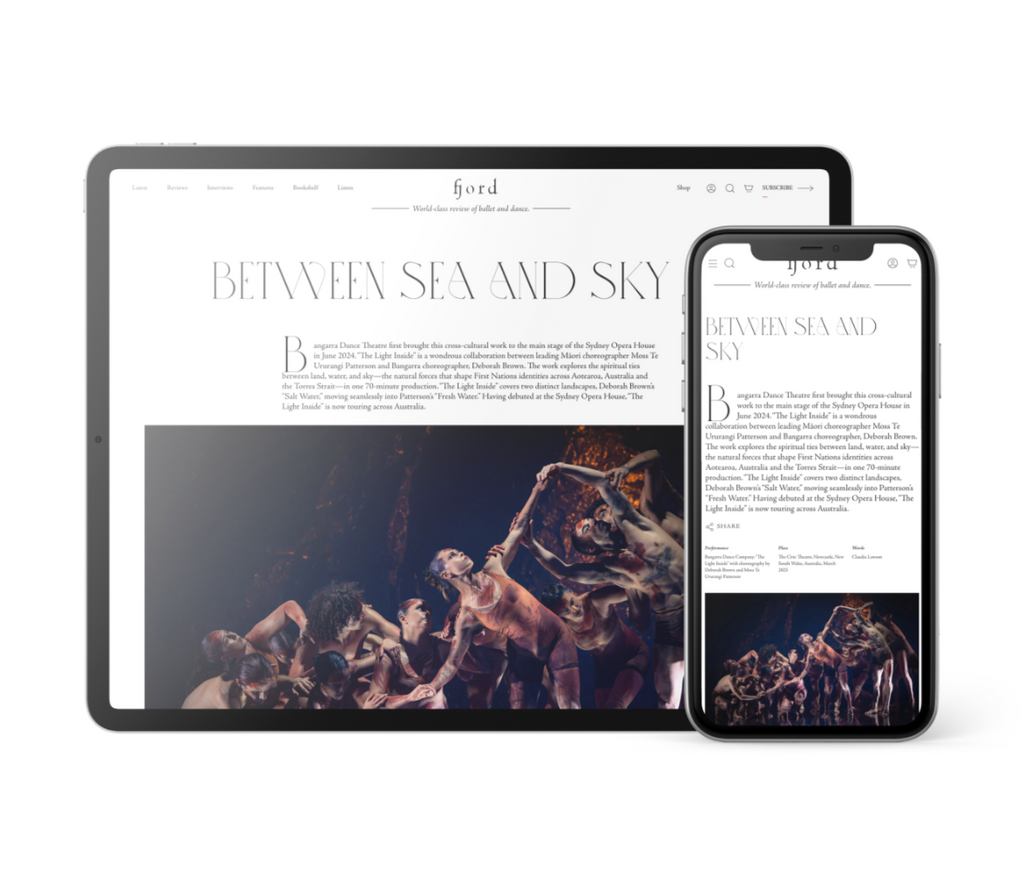Float like a Butterfly
Sans tutu or pointe shoes, New York Ballet principal Sara Mearns delivered a knock-out punch in her 20-minute solo, “Zebra.”
Plus
World-class review of ballet and dance.
Yellow caution tape dangles from the doorway to the Jerome Robbins Theater and ropes off every row of seats. Not only have we entered the Baryshnikov Arts Center space, we’ve also crossed a portal directly into the world of “Sissy,” Celia Rowlson-Hall’s new dance-theater production, where a troupe of interpretive dancers is in residence at an Elks Lodge, unaware that the building is slated for demolition. We, the audience for “Sissy” are also the audience for a performance created by the Director (played by Zoë Winters) of the residency. A hard-hatted, hazard-vested demolition crew worker (played by Lucas Hedges) is surprised to find the building occupied and insists we wear protective hardhats, a stack of which he hands out to folks in the front row. A dance ensemble serves as Greek chorus for the Director’s personal story, delivered in monologue fashion to the audience during rehearsal breaks. Everything—rehearsal, residency performance, and demolition—skids to a halt when a paleobotanist (played by film-star Marisa Tomei) shows up to claim protected status for an endangered plant species. Phew! It’s a lot to juggle in 80 minutes without intermission.
Performance
Place
Words



“Uncommonly intelligent, substantial coverage.”
Your weekly source for world-class dance reviews, interviews, articles, and more.
Already a paid subscriber? Login

Sans tutu or pointe shoes, New York Ballet principal Sara Mearns delivered a knock-out punch in her 20-minute solo, “Zebra.”
PlusJapan Society’s Yukio Mishima centennial series culminated with “Mishima’s Muse – Noh Theater,” which was actually three programs of traditional noh works that Japanese author Yukio Mishima adapted into modern plays.
PlusThroughout the year, our critics attend hundreds of dance performances, whether onsite, outdoors, or on the proscenium stage, around the world.
PlusOn December 11th, the Alvin Ailey American Dance Theater presented two premieres and two dances that had premiered just a week prior.
Plus
comments